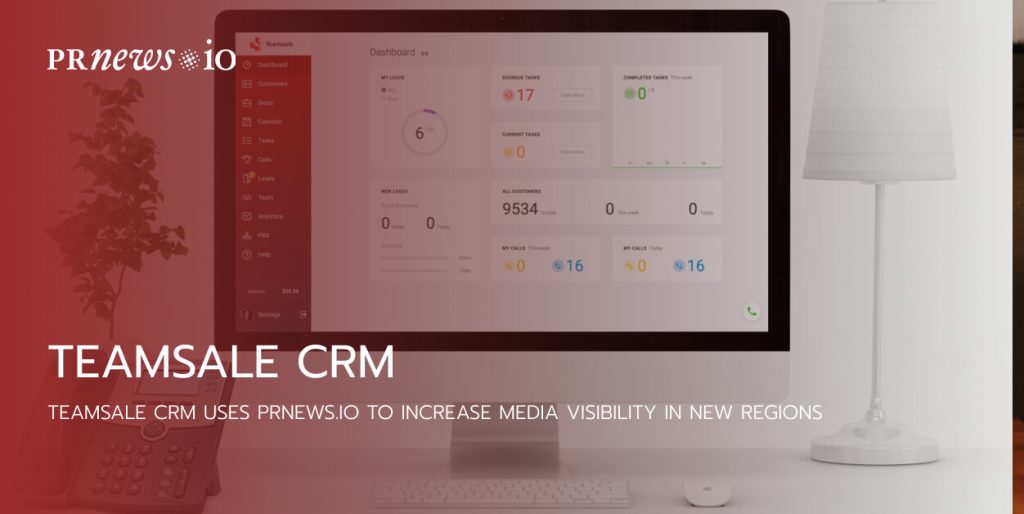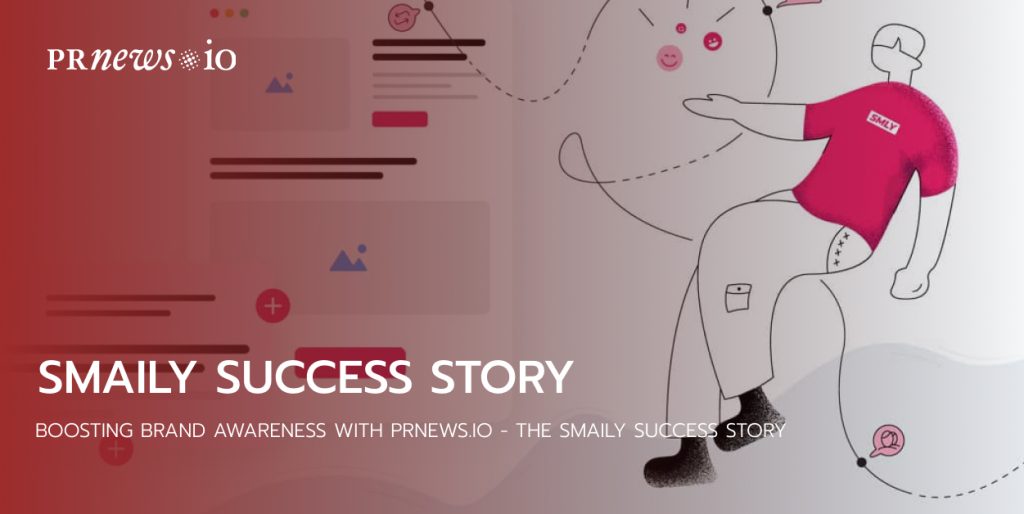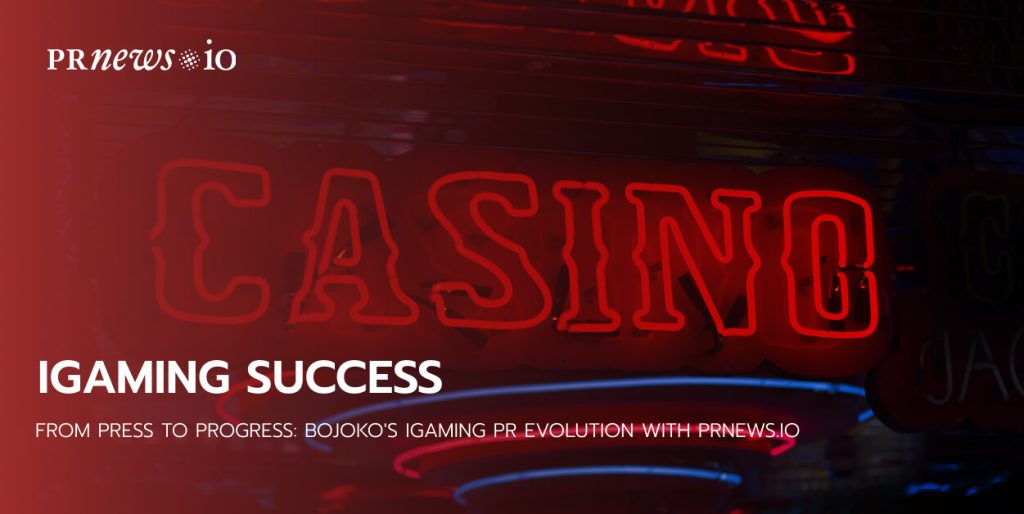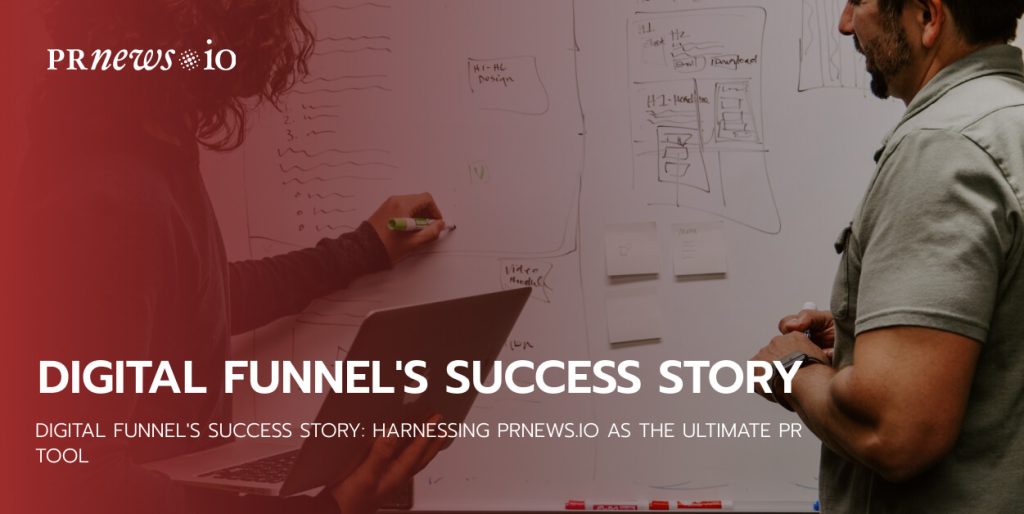Every startup faces this problem, right after launch: how to promote itself to save money and get maximum exposure? In fact, promoting on low budget should be a go-to strategy for a startup since they need to focus more on development and service to offer customers a high-end product.
One of the main things here is paying close attention to marketing trends and the latest strategies most companies use. Thus a startup owner can escape many mistakes and direct the necessary effort to implement the best strategies for startup promotion. Since startups cannot afford to spend million-dollar budgets on traditional marketing channels, they should focus on unbiased and creative ways of promotion.
Startup PR
The world of startups is highly competitive on all levels. Not only should you always pitch your exclusivity to investors but also stir up interest in media. Once you are in, fighting for publicity becomes fierce competition.
The “first contact” with media will largely determine the way your product will be covered by media outlets in the future.
If you claim your product is a breakthrough, the interest goes up. On the other hand, you are putting high stakes on the image of your startup in the public eye. In case your statements do not meet reality, be prepared for a huge kick in your media reputation. Journalists would not miss a chance to criticize statements that ended up inconsistent with reality. They will likely criticize even the tiniest bugs, errors, and failures.
From here we may conclude the following:
Launching a successful PR campaign requires a lot of backstage work, from examining your target audience to building an effective team, and finding your first investors.
If you are still at the early stage of your startup development, skip this article and devote your time to startup growth. Keep working and soon, you’ll be ready to share your best results, and generate interesting newsbreaks for top media outlets.
My startup is released…am I ready for a PR?
To prepare your project for a successful PR campaign, make sure:
- You can define your target audience.
- Your product provides a solution to a certain issue.
- You have a complete understanding of how the product works.
- You can define the benefits & weaknesses of your major competitors.
- You define your market volume.
- You have a plan for scaling up (locally, across the country, or on the international level).
Successful PR for Startup in Media
The first “touch” with media is scary. Not only do you introduce your startup to a wide circle of readers but also acquire a reputation in the world of media. Whether you hire a PR specialist or do it yourself, the task will be to find and engage the right people while telling your story through the most effective media channels.
It’s worth noting that paying for publications is a common practice. Yet, you can always find free opportunities that can work as effectively as the resources you paid for.
Below I am describing 5 major steps that stand behind a successful media PR for a startup, whether the placement is free or paid.
Step 1: Target Audience
As a startup founder, you should already have an idea of your target audience. Who are those people and what do you want to tell them?
In the media prospect, your target audience is not only end-users but also investors, business partners, media representatives, officials, and even future employees.
For each group of your target audience, you need to:
- select the most efficient promo channel (or channels) for each audience group.
- decide on the main message that you will broadcast through a particular channel to a particular audience group.
Promo channels are media outlets that help you reach the target audience. For effective media PR, you must know the audience’s interests and preferences. What do they read and what websites do they visit? Do they watch TV or prefer reading news through social media platforms? Be prepared to answer dozens of questions like that.
Step 2: Strategy Development
Here’s what you need to know about PR strategy for startups. Based on your data about the target audience and startup principles, you write down an approximate PR plan. A startup PR plan will include a list of promo activities (presentations & other events) and a list of media resources that may potentially publish your news.
Now, you may ask yourself: “How exactly do I reach out to the wished media outlets?”
With PRNEWS.IO, you don’t have to think about it anymore. Why? We are the world’s first content store to create & distribute brand content across online media.
All you have to do is to register an account and choose the number of publishes from the list of our collaborations (local & international). Either you submit your own text, or our copywriters create this content for you.
Let’s enter the world of media together!
The main message of your post should depend on the audience group that will read about you in the particular media outlet. This means each message will have a different emphasis on things that matter most to a particular audience.
For example, publishers from the official city media would like to write about the startup benefits in regard to the city. When it comes to resources specializing in investment news, you better focus on the startup’s profitability and prospects. And for the tech news resources, it’s important to present a startup from the side of its tech innovation.
Try to convey the main message the way it sounds understandable to everyone despite their knowledge and interests.
Step 3: News Generation
Many startups inundate reporters with a startup story of success. It remains unchanged from one media outlet to another and will likely stay the same in future releases. While founders crave to share information on their startup path, journalists crave to share the news.
How to turn your story into the “news”? In short, every news has an expiration date. Media shares news immediately, or else, it’s no longer relevant. Journalists hunt for news because they always grab more attention than other kinds of posts.
4 Ideas for Generating Startup News
- Startup release/ improvement/rebranding. The fact that you’ve just released your project is potentially interesting as news. It has a date, place, action, and circumstance. Another occasion to generate news about your startup is when you are changing (major updates or rebranding). Use them to include background information about your startup, while keeping the main focus on the news.
- Progress pace. Do you have any progress to share so far? Perhaps, you already reached one million visitors per day or gathered $100 thousand of revenue after 1 month of release. The media loves figures, especially if numbers are significantly higher than the starting mark. For a “wow” effect, I advise you to wait until you receive at least 25% of what was planned in the big run.
- Product recognition & collaboration with serious players. Your startup may and should gain recognition from other companies. To support progressive startup innovations, some companies test those developments in their business. Some of them may offer a partnership or other types of collaboration. The more well-known brands you can mention in the news – the more likely it will go viral.
- Big investments. People speak about money more than anything. If your project receives big funding from investors, do not miss highlighting this news across media. This is just another chance to raise your reputation among readers and publishers.
Modern users are different from those who “ruled the web” a decade ago. Millennials give way to Generation Z. These customers are pickier when it comes to purchasing and rarely follow direct advertising when deciding to buy. More and more modern customers wish the companies to speak to them and provide their ideas instead of flogging the goods.
So you have to create your brand narrative to tell your existing and potential customers who you are, what are your goals, message, and values, and what makes you so special. Whatever you’re selling to the audience, you should be able to show up what sets you apart from competitors and why people should choose your product instead of others.
Gone are those days when you could blindly dropping some mediocre content across a bunch of platforms for maximum exposure. Google now closely follows the quality of content and treats spammy links more roughly.
Go for quality and don’t chase after posting frequency – it’s not essential anymore. Post regularly but post wisely! Create engaging content that people would love to share and read. Inspect your niche keywords and create content that people search for. There is nothing as just ‘good unique content’ anymore, Rand Fishkin said. You should create great content that is 10x times better than anyone’s and answers all user’s questions in one place.
Build high-quality backlinks to your website with media and blogger outreach. This is one of the best ways of getting attention to your brand and its products. Thus, you kill two birds with one stone: you get good visibility in search since Google treats backlinks as one of Google’s ranking factors, and you establish good brand awareness among your target audience with placement of linked content across the right media. You can check out what media is right for you at the PRNEWS.IO marketplace and start building your media promotion right away.
Step 4: Consistency
A common PR approach states the number of mentions in the press is a critical indicator. It comes down to publishing a larger number of press releases with the same content.
Does it really work? Hardly…
When it comes to PR strategy for a newly-released project, generating a newsfeed and contacting media outlets is a consistent process. As stated earlier, startups can generate news on various occasions, whether it’s a financial achievement or a signed contract with a big brand.
It’s important to remind everyone working in the startup of your milestones and decide if it’s worth being shared in the news. Having a few announcements in reserve will get you covered within the next few months in case some media outlet asks you to make an urgent announcement.
Step 5: Opt for user-generated content
It’s a fast and cheap way of building trust in your startup as well as creating a nice community. It’s a perfect way to our emotions and let your customers play a vital role in your business. It provides them with their own sense of worth. And you will show that you value your users and trust their opinions.
Another great side of UGC is the fact that it saves you from a routine of generating tons f content yourself. Of course, it doesn’t mean you may take UGC as is and post it everywhere. But it requires less effort and time investment than content creation from scratch. UGC is not only testimonials and user reviews about the product. It can also be interviews with those who already tried the product and wishes to share their thoughts (opinion leaders will be a perfect fit). Videos are also an amazing way of creating virality and offering great content to others. Photos that users post online can also be added to your website. But don’t grab those shoots without permission – ask first!
Step 6: Cross-channel marketing campaigns
It’s impossible to boil the ocean, so you shouldn’t try to present your startup across all existing marketing channels. However, getting exposure to most of them would be great. Marketing is a complex measure and the most successful gain is those startups who manage to implement content and email marketing along with social media scope, SEO, crowdsourcing, etc.
In this light, startups should also pay attention to offline marketing and various activities that can be promoted with the use of various channels. This could be local networking events, conference backstage, and after-party, where startup owners may establish new connections and hand out business cards.
6 Questions To Ask Yourself Before News Release:
Before spreading any kind of news across media outlets, ask yourself these questions:
- Why do you think this news is worth sharing at the current time?
- Why is this news worth reading? How does it concern readers personally?
- What’s so cool and unusual about this newsbreak?
- How important is it for the market (at the local or even international level)?
- Were there any comments from famous opinion-makers?
- Should you expect any vital consequences after the new release?
Make sure you can cover all six questions from this list. Journalists will most likely look for these answers while reading your news. Failing to answer at least one of these questions will reduce the chance to get the news approved.
How Startups Can Be Interesting To Media
Here is a great way to surprise journalists with your story. Knowing answers to the next 6 driver questions will help your story sound intriguing to both media and article readers:
- What famous startups do you resemble?
Are you something like Uber or more like Amazon? What is the actual resemblance? By comparing yourself to big brands that everybody knows, your project will likely get into people’s minds more easily. Also, comparing your startup to the world’s major players makes it easier to describe the specifics of your project.
- Who are you disrupting?
Don’t be afraid to mention projects that are your direct competitors on the market. Who are you threatening to oust and how exactly?
- Are there any well-known (or exceptional people) standing behind your project?
Are you well-known for something besides your startup? Or maybe, you have a famous investor that cheers up for your project? Even if there’s no huge story behind anyone involved in your startup, be creative and find something from your background to bring it up! Humans will likely remember facts about humans.
- Can your startup associate with a big number?
Journalists know that “big numbers” catch attraction. They would love to write about startups that “can save a billion lives” or “received a total of $2 million investments”. Of course, not every startup can boast of big numbers from the very beginning of its path, but if you feel like you can, go ahead and bring it upfront.
- What is so special about your target audience?
Can you call your target audience distinctive? If yes, try to address this fact while generating news for media channels. People will likely read about unusual and unique facts, so your reference to a specific group of the audience should sound intriguing. Also, mention how exactly this audience group may benefit from your startup. Journalists will likely highlight those benefits that have to do with “hot” social issues (pandemic, LGBTQ rights, racism, etc).
- What is so special about your product?
Startups enter the market as quickly, as they disappear. If you are craving to stay in the niche, make sure you differentiate yourself from competitors. We know a lot of examples when startups suggested a new approach to a regular product/service, and then they turned into world-known companies. For example, Uber outclassed all taxi services with a convenient ordering system operated through the Internet. The startup’s idea became an inspiration to hundreds of other online taxi apps, yet none of them could ever repeat the success of Uber.
Startup PR: Common Mistakes
A huge misconception is when founders rely on PR as a way to solve all of their issues. As stated earlier, raising awareness about a project with potential bugs and poor quality will only cause a wave of negativity.
Another common mistake is when founders try to overestimate achievements or, even worse, emphasize their weaknesses. Both self-praise and belittling yourself are likely to push away clients and investors.
To avoid overestimation, make sure that each publication mentions a few perks of your startup, not all of them. If this channel reaches out to a certain type of target audience, think about which perks of your startup may raise their interest, and keep your main focus on them.
Oftentimes, founders lose sight of the main goal during their active collaboration with the media. Instead of reaching their target audience and gaining credibility from top outlets, they publish more content for the sake of publication.
The truth is, you don’t need thousands of mentions for a successful PR campaign. What really matters is the credibility of the media source and its attempts to reach out to the right audience with the right content.
The last but not the least dilemma for startups is whether to hire a PR agency or make it through yourself. At some point, hiring a PR specialist will be financially harmful to the project, especially if it’s super tight on budget. Unfortunately, many young projects decide to pay for the PR service but then, have no money for more significant startup investments.
My advice is, to prioritize product improvement over PR or other expenses in case your budget is tight. At the end of the day, a good product promotes itself.
Expert Сomments about Startup PR
Brandon Adcock, the CEO of Nugenix

The first thing you need to do is develop a media kit: a collection of information about your company that you can provide to reporters and journalists that will make presenting your pitches less time-consuming.
It includes basic information about your company such as your company name, website address, and contact information, as well as information about your product or service and why it’s unique and exciting.
As a start-up, you can’t rely on brand awareness, so be sure to include recent news about your company, testimonials from customers, and any other information that might be interesting to reporters.
Once you’ve created a basic template for PR outreach, you’ll have more time to focus on perfecting your pitch for each outlet, increasing the chances your story will get picked up.
Rob Barratt, Co-Founder of The Industry Leaders

There are a few simple, low-cost ways to get pr for your startup, here are two of the best:
Use Social Media The Right Way
The single best piece of advice you’ll get from anyone who knows the true value of social media is: forget mindless posting and instead BUILD RELATIONSHIPS. But not with anyone. Find people who are further ahead in the journey, people who are where you want to be in the future. Engage thoughtfully with their content, DM them, help them in any way that you can (without charge), and ask them questions that get them talking about themselves. In other words: build relationships with influencers. Relationships with an influencer in your niche are worth 10-100x more than making friends with a follower. That’s because, when you have influential people in your social network, they’re likely to engage with your content (which puts you in front of their followers on platforms like LinkedIn) and you’ve got more chance of getting introductions to other influential people in their circle. The keys to this strategy are offering value and being consistent. It’s a virtuous cycle that takes time but the ROI can be infinite.
Get Booked Onto Industry Podcasts
Podcast hosts are always looking for guests and it’s easier than you might think to get booked on one that your potential customers are listening to. All it takes is a little work. The most basic way of finding podcasters looking for guests is to do some research on Google, making a list of podcasts that your potential customers are likely to be interested in. For example, maybe you’re an executive coach and have a hunch that C-Suite professionals are likely to be interested in podcasts about leadership. That one finding gives you more podcasts to pitch to than simply getting booked onto Coach-focused podcasts. There are also a few ways that you can get booked onto podcasts for a small fee, saving time in the process. Places like Fiverr and People Per Hour are good places to start looking for a Virtual Assistant (VA) who can help with the process of research, outreach and even pitching to podcasters. There are also sites like The Industry Leaders.org and matchmaker.fm which are specialists in getting people booked onto podcasts.
Chelsea Cohen, Co-Founder of SoStocked, an Amazon inventory management SaaS startup.

One of the best ways to get PR for your startup is to focus on your first employees and make them become influencers of your product. Startups like to focus on external PR opportunities such as journalist outreach, but they often forget to tap into their customer base and use it to achieve their PR goals. Customers, and especially satisfied customers, can get your PR like nothing else if you decide to invest in this strategy. All startups should look to build a good product that satisfies their customers and offer them an opportunity to act as influencers for their products.
Will Goldman, senior community outreach coordinator in charge of handling Digital Public Relations at BluShark Digital

Generating PR for startups all begins with defining core values and ideas for how to communicate those topics to various publics. Startups should think about what not only resonates with their preferred target demographic but also with their employees. Ultimately, the employees will need to embody those core values as representatives of the company, so this must be a collaborative effort.
A start-up should first focus on creating a culture and truly embodying it before working on storytelling. With enough time embodying an idea and various efforts to exhibit a commitment to core values, a start-up has the chance to build a presence in a certain sphere, generate press mentions and create visibility. Over time, employees can commit to the established core values and bring outside ideas that help shape, reinforce and build upon that company’s ability to generate PR surrounding their values.
Example:
BluShark Digital ‘adopted’ a real-life shark to benefit a shark protection and research program at the University of Miami. An employee brought this idea up to management and the company asked employees to submit ideas for naming the shark. In doing so, each member held a stake in this fun project and the company embodied its core value of “community” in a novel way that is also visible outside the company.
Content Marketing Platform
- 100,000+ media publications;
- get backlinks to your product;
- scale work with content distribution.
VERY Important Final Words…
PR is a very small part of what a good startup needs to take care of. DO NOT treat PR as a magic wand. It will not turn your small startup project into a successful company with millions of users and tons of investment proposals.
The fact is, Public Relations works for the future. Persistence and patience will get you to the long-awaited result.
But first, follow our guideline tips 🙂





